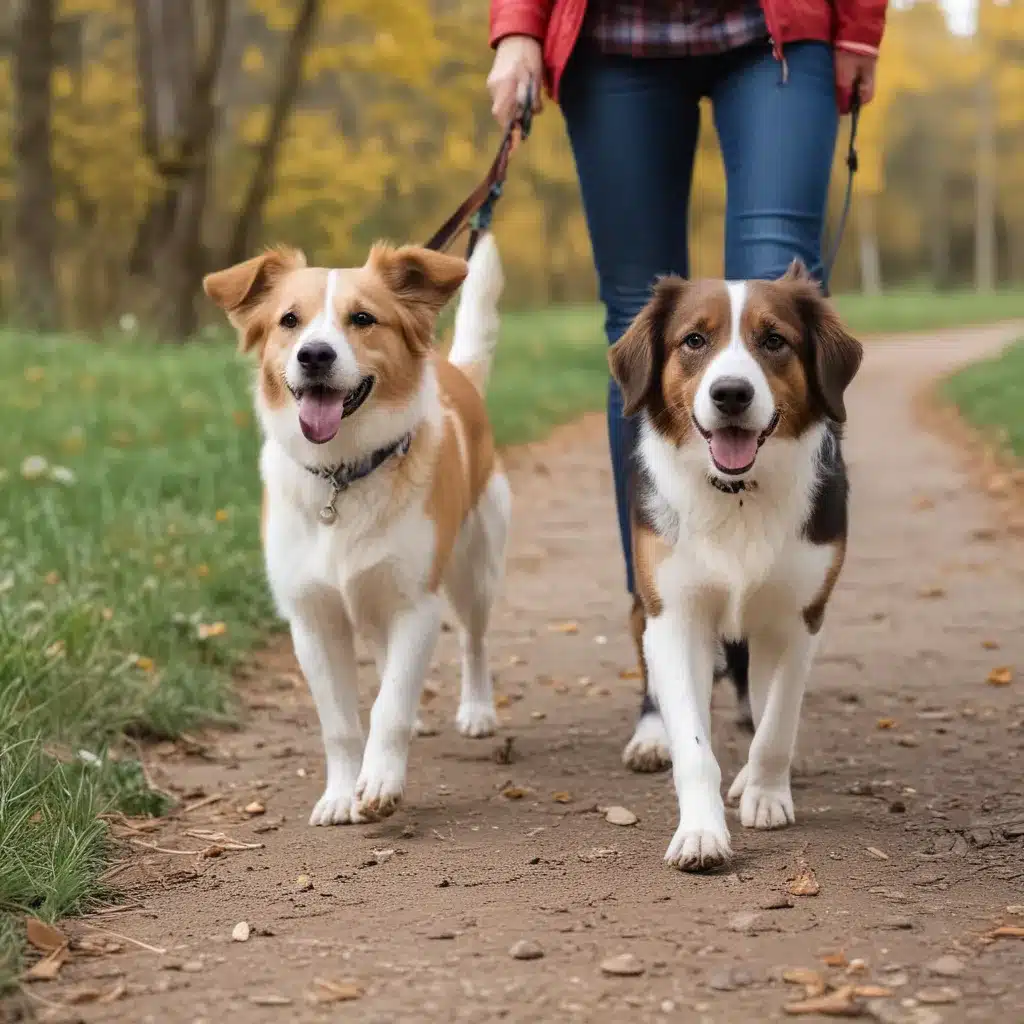
Walking the Walk
Oh, the joys of taking your furry best friend out for a leisurely stroll! For most of us dog owners, those carefree walks are the highlight of our day. After all, what could be better than exploring the great outdoors with your loyal companion happily trotting by your side, nose to the ground and tail wagging?
But let’s be real – there are times when we need our pups to walk a little closer to us, without constantly pulling or darting in every direction. Whether it’s navigating a crowded city sidewalk, crossing a busy street, or simply maintaining control for both your safety and theirs, teaching your dog to heel on a leash is a valuable skill.
Now, I know what you’re thinking – “Heel? But that sounds so…restrictive. Isn’t that just for obedience competitions?” Well, my fellow dog parents, let me tell you, heeling can be a game-changer when done right. It’s not about forcing your pup to march in lockstep beside you for the entirety of your walk. Rather, it’s about having that reliable “come to my side” cue in your toolbox for those moments when you need a little extra control.
Laying the Foundation: Hand Targeting
The key to teaching a solid heel? It all starts with hand targeting. This nifty little trick not only helps guide your dog into the proper heel position, but it also keeps their focus on you – which is crucial for maintaining that close-quarters connection.
Here’s how it works: Extend your hand towards your dog, palm facing them, about six inches from their face. Wait patiently until they make that all-important nose-to-hand contact, then click (or use your verbal marker like “yes!”) and reward with a tasty treat. Repeat this process, gradually moving your hand closer to your body as your dog gets the hang of it.
This video from dog trainer Laurie Luck has some great tips on perfecting that hand target. Trust me, once your pup understands this simple cue, the rest of the heeling process becomes so much easier.
Building Attention and Impulse Control
Of course, heeling isn’t just about the physical act of walking beside you. It’s also about your dog’s mental focus and self-control. So before we dive into the leash work, let’s take some time to reinforce those all-important attention skills.
Start by simply standing still with your dog on a loose leash. When they look up at you, click (or use your marker) and treat. Gradually increase the duration of their attention before rewarding. Once they’ve got that down, try taking a step or two, clicking and treating when they stay by your side.
The key here is to make it easy for your dog to succeed. Don’t worry about keeping them in the perfect heel position just yet – focus on rewarding any moments of focus and proximity. With patience and consistency, those brief moments will grow into longer stretches of attentive heeling.
Hitting the Pavement
Alright, time to put those skills to the test out in the real world! Start by practicing your heeling indoors, where there are fewer distractions. Remember to keep your sessions short and sweet, and always end on a positive note.
As you venture outdoors, begin by only asking for a few steps of heeling at a time. Click and treat liberally when your pup stays glued to your side. If they start to pull ahead, don’t yank them back – instead, try taking a step or two backwards, then pivoting and moving forward again. This helps reinforce the idea that heel means “by my side,” not “at the end of the leash.”
The team at Daily Paws has some great advice on gradually increasing the duration of your heeling sessions, all while keeping it fun and rewarding for your canine companion.
Finding the Right Balance
Now, I know what you’re thinking – “But wait, isn’t the whole point of a walk for my dog to explore and sniff to their heart’s content?” Absolutely! And that’s why it’s important to find the right balance between structured heeling and free-roaming exploration.
The majority of your walks should be all about letting your pup indulge their natural curiosity. After all, those meandering sniff sessions are just as important for their mental and physical well-being as the actual walking. But having that reliable heel in your back pocket can make those moments when you need a little extra control so much easier.
Think of it this way – you wouldn’t want to spend your entire walk stuck in a boring old heel, any more than your dog would. But when you do need to keep them close, whether it’s crossing a street or navigating a crowded area, that heeling skill can be a real lifesaver. And who knows, you might even have some fun putting those polished heeling skills to the test in your local dog show or obedience competition!
Wrapping it Up
Teaching your dog to heel on a leash takes time, patience, and a whole lot of positive reinforcement. But trust me, it’s a skill that’s well worth the effort. Not only does it make walks safer and more enjoyable for both of you, but it also strengthens the bond between you and your canine companion.
So grab those tasty treats, get out that clicker, and start practicing those hand targets. Before you know it, you and your pup will be strolling side-by-side, the envy of all the other dog owners on the block. Happy heeling, my friends!

